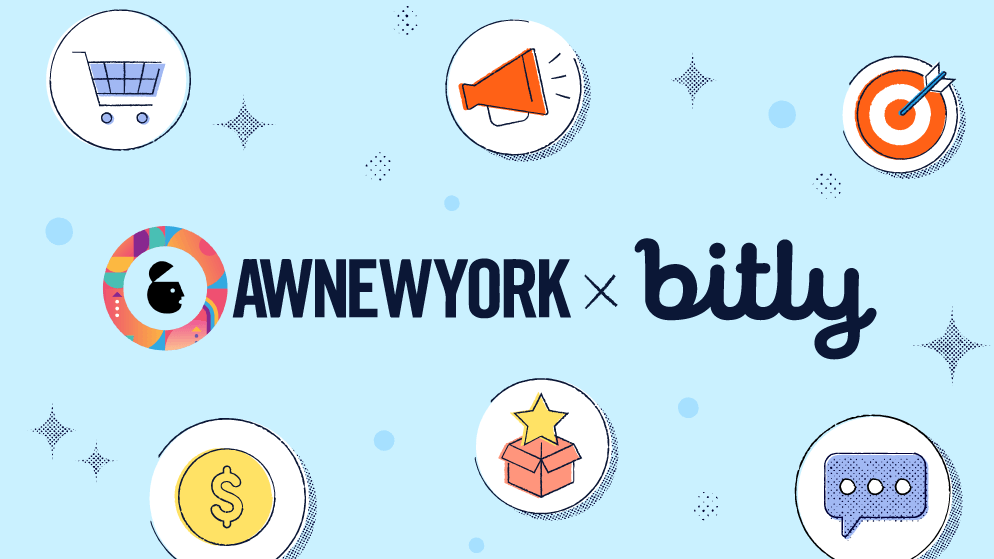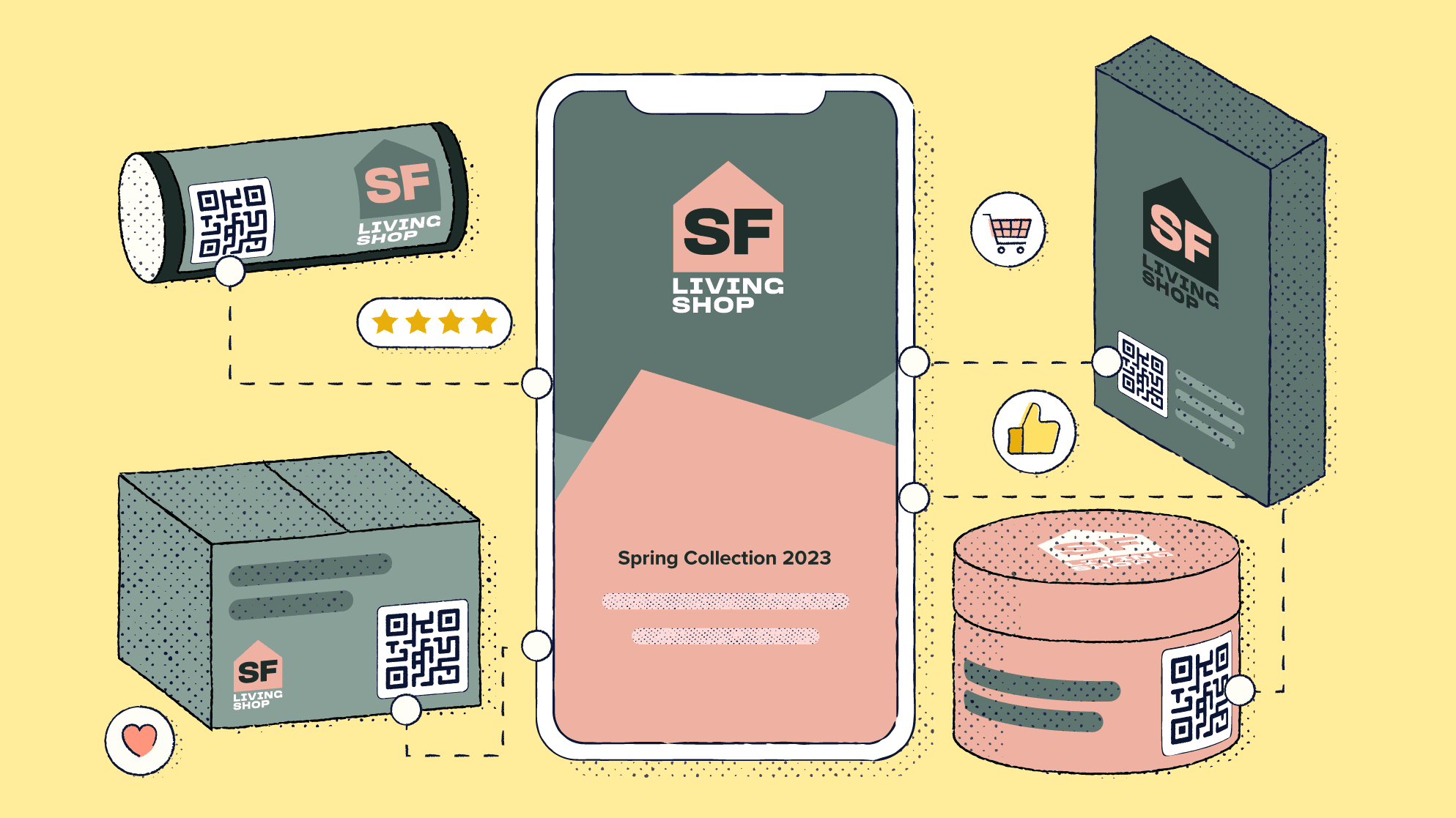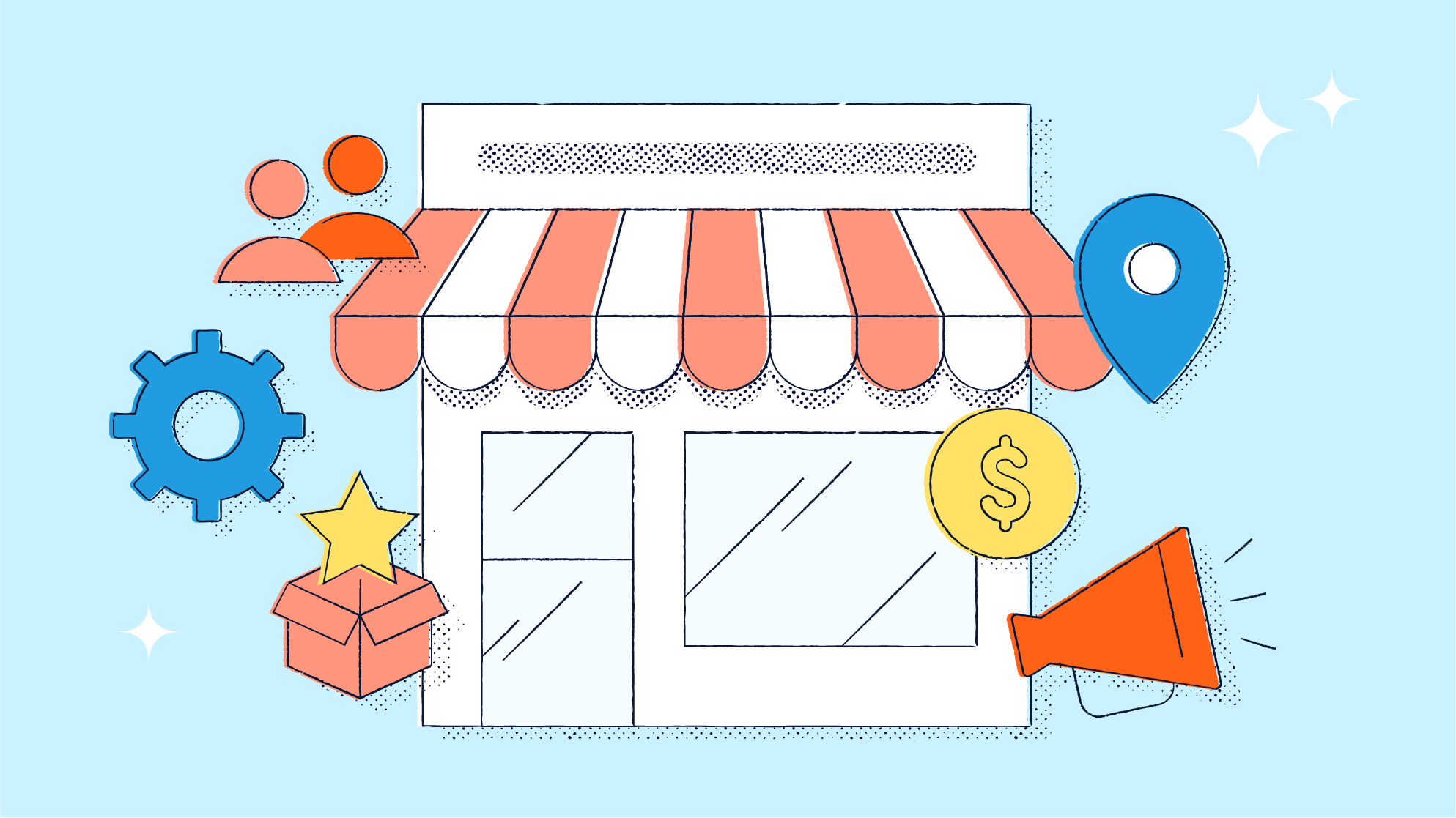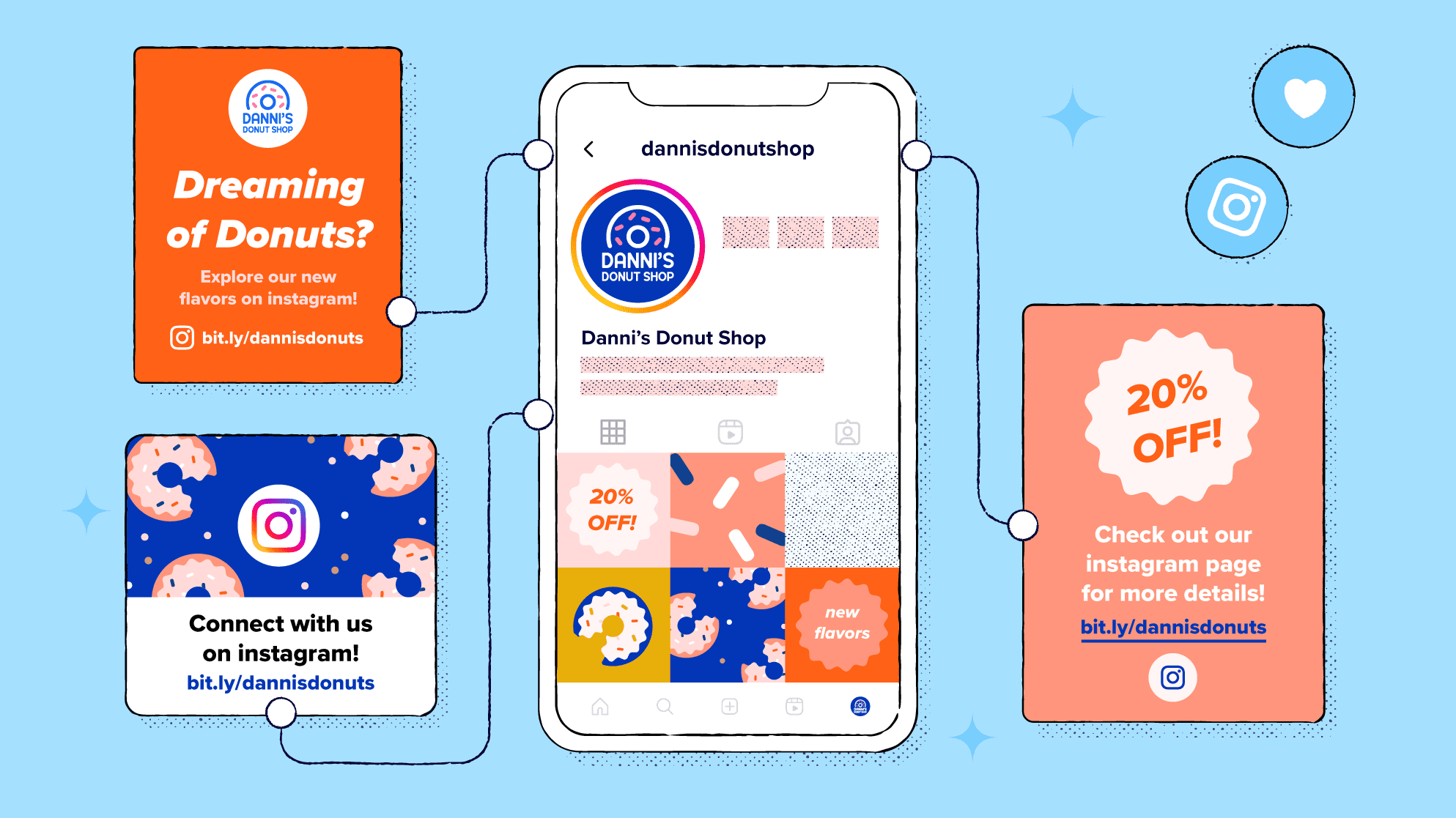
From keynotes and panel discussions about the biggest issues shaping the industry to interactive exhibits and activations that challenge us to think outside the box and imagine what’s possible, Advertising Week New York surely did not disappoint. This highly anticipated event brought together the brightest minds in marketing, advertising, media, and tech to engage in deep discussions, network, and gain a better understanding of emerging trends and technology.
With so many experts packed into one place and a seemingly endless array of sessions to attend (there were over 400 to choose from!), we learned a ton about the future of consumer engagement and what to expect in the years to come—and we wanted to pass some of those learnings on to you! Let’s dig in and explore our top takeaways from this year’s Advertising Week event.
Connected packaging is the future for brands
QR Codes have changed the way businesses and brands connect with consumers, providing a new avenue for interaction and engagement with every scan. However, the industry-wide shift from the use of traditional barcodes to 2D barcodes, or QR Codes, on product packaging will transform the way the consumer packaged goods (CPG) and retail industries approach consumer relationships as a whole.
Because QR Codes are ubiquitous and easy to use, brands are already incorporating QR Codes on product packaging to connect the physical world to the digital one. This massive trend within the retail and CPG industries has inspired brands to start thinking more creatively about the experiences they create for consumers, from linking out to interactive content destinations to sharing more information about how their products are produced.
Here are three key takeaways from the session “How Connected Packaging is Changing the Future for Brands” hosted by Paul Simonet, Director at Experience is Everything:
- QR Codes revolutionize engagement: QR Codes provide brands with a direct and effective channel for engaging with customers and prospects. Brands like Coca-Cola are already committed to incorporating QR Codes across all its products globally to drive growth, but smaller brands have the opportunity to get in on this trend early and take advantage of this direct line of communication with customers.
- Content is king: The key to successful connected packaging is what or where that QR Code links to. Brands should ensure that the QR Codes they integrate actually offer a creative or engaging experience that goes beyond the expected and mundane. Strong calls-to-action and thoughtful design are critical for enhancing engagement and storytelling, so think strategically about your approach.
- Sustainability and traceability: Simonet rightly stated, “If you’re not talking about your sustainability from your packaging, where are you talking about it?” Consumers value brands that have sustainable business practices and care about where ingredients are sourced and how the products are produced. QR Codes are the perfect avenue for communicating this information directly with consumers, so savvy brands will take advantage of this opportunity to tell their brand story at the point of consumption.
Did you know? Daily Harvest is using Bitly QR Codes to give customers a taste of what the brand has to offer and highlight its commitment to sustainability, Daily Harvest has strategically incorporated Bitly QR Codes onto clings on freezer doors across Kroger stores so shoppers can scan to learn more about their work supporting regenerative farms.

Paths to purchase are changing for consumers
Brands in the retail and CPG industries are faced with the dual challenge of building loyalty and breaking through the noise in a fiercely competitive market. This is becoming increasingly challenging as consumers’ shopping behaviors rapidly change, making innovation and experimentation for brands a necessity. The most notable change in recent consumer behavior is around how people shop—more than ever, consumers seek unique, personalized shopping experiences and prioritize inspiration and discovery over traditional product research.
While more shoppers are going online to make purchases, there is still a lot to be said about the in-store experience and seamlessly integrating the two. Carrie Seifer notes, “…it’s known that you’re going to interact online in-store,” underscoring the idea that modern consumers truly want the best of both worlds. Because the global pandemic inspired consumers to shop online, physical stores are now more curated, offering a museum-like experience that helps consumers connect with the brand beyond its products.
For brands big and small, staying ahead of the curve means understanding this shift in behavior and adapting to a more discerning, tech-loving consumer. Rad Power Bikes, for example, is leveraging Bitly QR Codes on hang tags in retail locations to turn ordinary product labels into gateways to online information. With the quick scan of a QR Code, customers are sent directly to corresponding product pages on the brand’s website to make every interaction far more dynamic.
Here are three key takeaways from the session “Why People Buy: Unpacking 2023 Retail Trends and Paths to Purchase” featuring Carrie Seifer, Chief Customer Officer at GWI, Laura Connell, Senior Consumer Trends Manager at GWI, and Brittan Bushman, Director of Strategy at Pinterest:
- The joy of shopping: The future of retail will shift towards the discovery process and creating memorable experiences for consumers wherever possible. Consumers enjoy exploring and discovering products, making the mental model of shopping more about searching and refining than instant buying. Brittan Bushman notes, “We really enjoy the discovery process, the actual shopping for the thing you’re going to buy, maybe even more than actually getting that item.”
- Personalized brand discovery: Laura Connell notes, “Social media isn’t the end-all-be-all of commerce. Brands have a lot to compete with these days, especially if you think about all the ways AI has developed.” To address this, brands should focus on creating unique audiences by tapping into attitudinal and behavioral data. Tailor your content to the individual needs and preferences of consumers and make the brand discovery process more engaging and relevant, because the demand for personalization is only going to continue to rise.
- Blending in-store and online: In-store and online shopping experiences are becoming more intertwined than ever. Brands, especially digitally native ones, can use in-store spaces as an opportunity to create deeper connections with customers. These physical spaces are essential for building brand advocacy and driving continued consumer engagement online through QR Codes placed strategically in retail stores.
Invest in creating omnichannel experiences
Today’s consumers have come to expect seamless shopping experiences, whether shopping online or in-person. In order to meet these expectations, marketers and retailers need to team up and craft omnichannel experiences that provide continuity and delight in new ways.
At the heart of delivering powerful omnichannel experiences is a deep understanding of the complex customer journey. For retail and CPG industries, this journey is highly fluid with endless interconnected interactions. By surprising and delighting customers at every touchpoint, brands can bridge the divide between their digital and physical storefronts. Ultimately, brands committed to creating more memorable moments for consumers will redefine the shopping experience, rekindling the joy of discovery and fostering deep customer loyalty.

Here are three key takeaways from the session, “Creating Powerful Omnichannel Experiences Through Collaboration” featuring Sarah Travis, SVP/President at Roundel, Mary Beth George, VP, Store Experience Marketing at Target, Randy Limes, Group Director, US Omnichannel Marketing at Mars Wrigley, Carrie Sweeney, VP, Retail at Pinterest, and Renee Doerre, Sr Director, Strategy & Enablement at Roundel:
- Surprise and delight: Brands need to exceed customer expectations and make every interaction a delightful experience. Whether this is executed through personalized offers or unexpected surprises like rewards or discounts, creating a reason for customers to engage deeper in-store is essential. Mary Beth George said, “They want an experience that goes beyond just a transaction, so we’re thinking about how we ignite all the senses and immerse them in surprise and delight…they pull out the app, scan for an offer, find the latest promotion, or continue their inspiration with us in a more deep way, not thinking that the store as the end of the journey.”
- Customer-centric decision-making: Put the consumer at the heart of all your business and marketing decisions, and always ensure that their experiences align with your brand’s vision. Coordinated efforts and consistency across channels are vital for delivering a seamless journey. It’s about considering the totality of the journey and giving consumers an experience that is so good that they ignite a conversation on your brand’s behalf.
- Bridging the physical and digital: In-store experiences should seamlessly connect with the digital world, offering consumers unified messages and easy access to information via tools like QR Codes. Mary Beth George said brands need to “…make sure that the store experience brings both that human, physical, and digital experience together in a way that digital alone can’t—there has to be a reason to engage deeper in the store.”
Loyalty is about more than rewards programs
Now more than ever, consumers are incredibly well-informed. They seek out brands that not only fulfill their promises but also consistently align their actions with their words. Trust is not a one-time achievement; it’s an ongoing endeavor. To earn and retain loyalty, brands must go above and beyond to create unexpected experiences. It’s in these moments that brands foster deeper connections and relationships with their customers, ultimately converting them into loyal advocates.
Taco Bell has demonstrated the power of harnessing their devoted customer communities by mobilizing their most loyal patrons, or what they call “Purple Knights.” Communities like these champion the brand, acting as powerful influencers and advocates. In a world where recommendations from peers carry significant weight, community-driven loyalty is a valuable tool in building trust and fostering loyalty.
Here are three key takeaways from the session, “Creating Loyalty and Habit: Does it Exist?” featuring Dane Mathews, Chief Digital Officer at Taco Bell, Kofi Amoo-Gottfried, Chief Marketing Officer at DoorDash, and Phoebe Bain, Senior Reporter at Ad Age:
- Trust and consistency matter: Brands need to deliver on their promises and align with the way their business operates. Building trust is a continuous effort, so brands should anticipate and inspire, aiming to move beyond trust into the realm of delight to foster stronger relationships. Dane Mathews stated, “It’s a game you’re always trying to optimize and you’re trying to get better at it. Hold on to how you exist as a brand today but you need to find new ways to drive engagement.”
- Community-driven loyalty: Leveraging your community can be a powerful loyalty tool. Sometimes consumers won’t have the best experience or be able to find what they’re looking for, but if you focus on your best customers and consistently deliver for them, they will advocate for you and help other consumers choose your brand.
- Experience is key: With the rise of direct-to-consumer (DTC) brands and increased competition, it’s not enough to merely reduce barriers to entry. Building trust and loyalty demands a focus on the entire customer experience, so brands must create remarkable experiences to keep consumers coming back. Loyalty isn’t just about the product; it’s about how the brand makes the consumer feel throughout their journey. Dane Mathews noted, “For today’s marketers, there are so many more tools available and the expectations are higher…and you have to continue to drive that trust deeper and deeper down the experience.”

Adapt to the non-linear customer journey
How can marketers in retail and CPG address the shifting landscape of consumer preferences? Focus on the importance of convenience, quality, and affordability. Convenience has risen to the forefront as a crucial driver for online purchases, sometimes even eclipsing the allure of discounts. Last-minute opportunities and convenience-driven shopping have become especially prevalent. To win over these consumers, brands and retailers must prioritize and optimize the convenience factor in every aspect of their customer experience.
As traditional linear paths to purchase become more rare, embracing the diversity of consumer journeys becomes even more important. The wealth of available data and the interconnectedness of digital touchpoints make consumer journeys more dynamic and unpredictable than ever before.
Marketers can address this by better understanding and catering to the demand for convenience, providing personalized and seamless experiences that guide consumers along their unique paths. Brands that do this well will create meaningful connections, foster loyalty, and enhance the overall customer experience.
Here are key takeaways from the session “Connecting with Your Audience On-the-Go” featuring Allison Schiff, Managing Editor at Adexchanger, Toby Espinosa, VP of Ads at Doordash, Dennis Potgraven, Chief Strategy Officer at Wavemaker, Mark Pearson, and VP, Marketing Health at Reckitt:
- The importance of convenience: Convenience has emerged as a critical driver for online purchases, so brands need to ensure they’re prioritizing speed, affordability, and selection. Make it easy for consumers to buy your products and keep them coming back for more by delivering on your brand promise.
- Diverse consumer journeys: Mark Pearson said, “We know all the data these days that we have at our fingertips allows us to see that consumer journeys go all over the place, they bounce everywhere, everyone is unique and different in their path to purchase. But that doesn’t help us as marketers and advertisers arrange our worlds in a useful way.” Customer journeys are now more dynamic and unpredictable than ever, and marketers can address this by using data to identify 2-3 typical journeys. Then, focus your efforts on creating seamless experiences across those journeys that cater to the demand for convenience.
- Building an ecosystem: Marketers need to understand the significance of being present on multiple platforms. Creating a comprehensive ecosystem by partnering with retailers who excel in specific areas, exploring social commerce avenues like TikTok Shops, and embracing a variety of approaches. Dennis Potgraven noted, “From a marketer point of view, there’s a myth that you don’t need to be on all the platforms or that you can only do retail or DTC. We see now that it’s much more important to build that ecosystem…that’s something that’s now in our hands. It’s a big opportunity.”
Advertising Week New York was jam-packed with industry-leading insights and conversations that shed light on the powerful impact of connecting with and delighting customers to keep them coming back for more. Use these trends and takeaways to guide and inspire your team to start building stronger relationships with consumers so your brand can thrive.
Making it easy for your customers to connect with your business or brand should always be a priority. With the Bitly Connections Platform, customers can shorten and customize links, create QR Codes, curate their Bitly Link-in-bio, and track performance all from one place. Feeling inspired? Get started today.